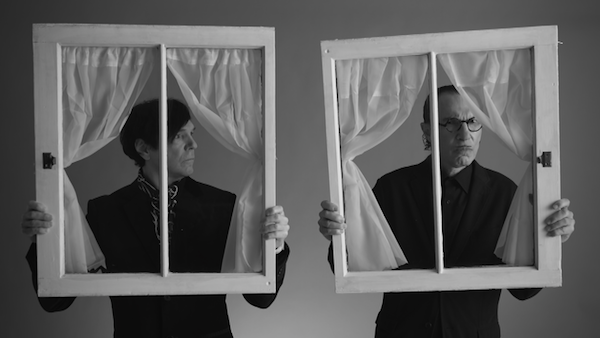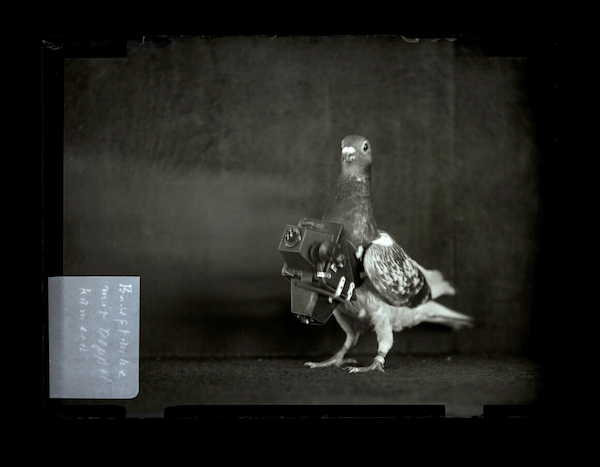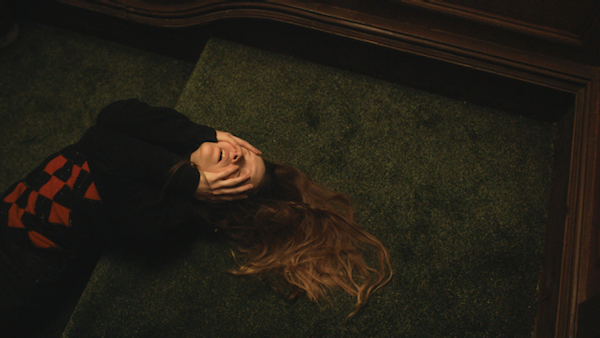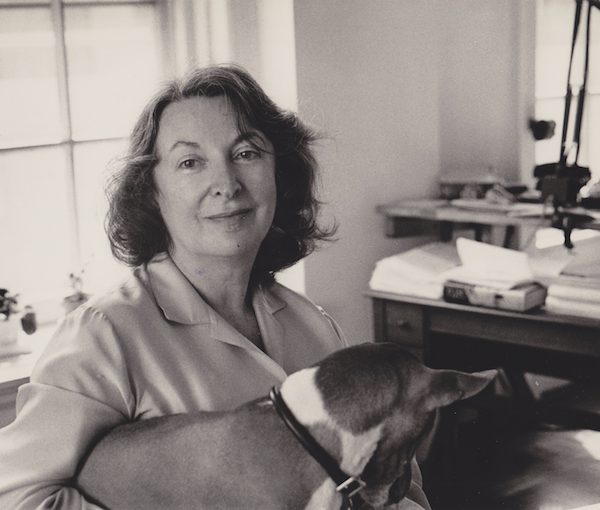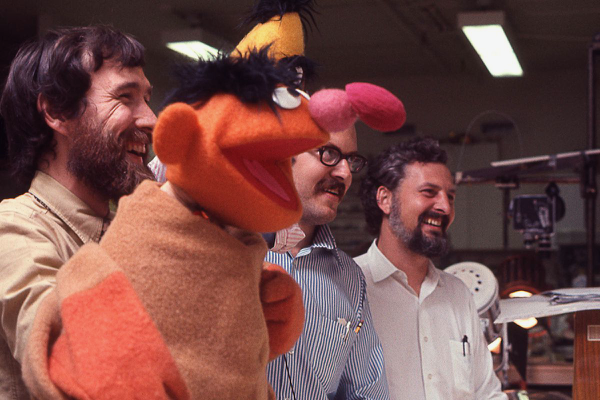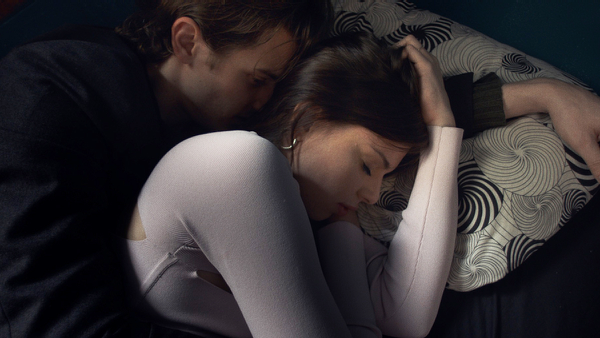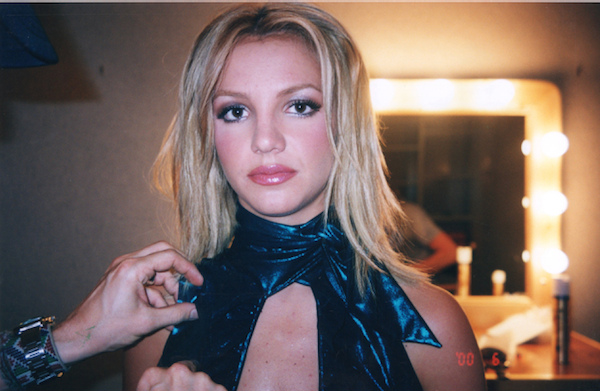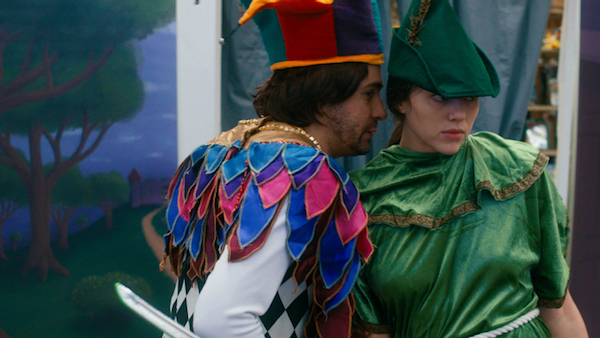
Interview by Dominic Erickson
“Glob Lessons” is the funny and heartfelt feature directorial debut of Nicole Rodenburg. Written by Rodenburg and her creative partner Colin Froeber, the film premieres as part of the Tribeca Film Festival on June 12.
Rodenburg and Froeber star as Jesse and Alan, two mismatched strangers coupled together as coworkers in a traveling children’s theatre company called Globe Trotters. Jesse is an unpredictable woman from West Virginia looking for some fun. Alan is a “mostly-closeted” gay man from Minnesota insecure about his life’s trajectory.
Dominic Erickson spoke with Nicole and Colin about “Glob Lessons” and growing up in the Midwest.
Dominic Erickson: How did you feel once you heard about getting into Tribeca?
Nicole Rodenburg: We were really surprised. Back in October, we got an email sort of out of nowhere asking us to submit from the programmer who ended up being one of our major champions. It was not expected that a festival like Tribeca would be soliciting us — two nobodies who made this movie for very little money. It’s still a secret as to how we got on their radar; no one has told us how that happened. We hadn’t finished the film at that point.
Colin Froeber: It was definitely a work in progress.
NR: The only places we had submitted to then were Sundance and Slamdance. We did that at the beginning of October just to give us a kick in the pants to get working on some of the challenging sequences. When we got into Tribeca, it was a total shock. That was about six weeks ago. We’ve had a very, very intense month and a half getting the film ready to be screened.
DE: You two have been friends since you were 16 years old at Fargo South High School. Did you think you would ever come back here, especially to make a movie?
NR: I’ve been in New York since 2009 and Colin moved to New York in 2012. The second Colin moved here, we started writing together again. Our common fascination growing up was the world we were in and trying to understand the sociological landscape of our home. As we get further and further away from it, we have a stronger viewpoint of how we were shaped and affected by where we grew up. Even when we were 16, we were trying to parse these things out. Why did we behave the way we did and why did other people behave the way they did? We started writing this movie in 2013, so the plan has always been to go back and make this film the whole time. It just took us a long time because I had only been on one short film set as an actor.
CF: I hadn’t been on one at all.
DE: I didn’t know you had started writing this in 2013. Even though it wasn’t even a decade ago, we’ve progressed a long way since then in terms of gay rights and visibility.
CF: I was closeted for a long time, all the way through high school at the very least. Some people really struggled, and I was not somebody who had a lot of trauma around the coming out process. But it was very difficult and complicated and that was shaped a lot by the world we grew up in. You’re right, we have come a long way since I was a youth. I think that’s something that comes up in the movie with my character Alan, who we like to call “mostly closeted.” I think that causes him a lot of anxiety.
NR: Things have happened so rapidly with LGBTQ+ rights. The thing with us is that we’re old, but we’re not that old. We didn’t grow up in that environment. Even though it’s accepted now, there’s still trauma under there for a lot of people so just because your neighbor Joe no longer doesn’t have a problem you being gay, the fact that Joe’s son called you f** all through high school does still have a residual impact.
CF: We haven’t moved into a utopia yet. I was just reading an article about a measure that just barely passed [against] conversion therapy by one vote. Which is great, but it’s still so tight. I think it’s still important to remember that there are still people who struggle and are continuing to struggle.
DE: This Midwest can be a bleak liminal area where everyone is in between ideas and lots of things are left up in the air.
NR: Exactly. You’re speaking our language when you say bleak liminal space. Liminal space is a fascination for us, and the whole film is made up of them. When we were first trying to get the movie produced, and we talked to people out here, they said, “Why don’t you just shoot it on the East Coast? It’s cold out here, too. Same diff.” But it’s not. If I get angry at Colin and get out of the car in the winter in Connecticut, I could stomp somewhere and be in a town. There’s such a different life or death experience that is created in the world that we’re from. You have no choice but to get back in the car.
Jesse and Alan are forced into intimacy, and these are two people who, if they had any other escape hatch, would take it. Which is why they’re in their thirties and still struggling to connect. It’s a microcosm of something we all feel; they just happen to have it very much on the surface. The choice of setting it where and when we did was super intentional.
DE: I appreciate all of the Midwest gems. I enjoyed hearing the Menards Christmas jingle.
NR: We worked really hard to get that. We had to source it. We couldn’t even use the one we initially had. They were happy to help though.
DE: Did I also spot a Fargo Brewing Company can in the background somewhere?
NR: Good eye! They gave us beer in exchange for putting the can in the movie.
DE: How was working with the children in the movie?
NR: They were wonderful. We built out four times the amount of time we thought we would need. The child actors in our film are amazing. All the kids who were in the film were participating in these Young Filmmaker Workshops that we ran concurrently. It was a lot for us because I’d be standing up there, fully costumed, directing and acting and then we’d call “cut” and have to entertain the children and answer questions to my crew.
CF: And then we’d roll again.
NR: It was super exhausting but rewarding.
CF: It was really important to us not just to bring the kids on set and treat them as extras, we wanted them to be involved. They made their own films during the workshop, too.
DE: How many days was your 6-person shoot?
NR: Sixteen.
DE: You shot over Christmas break. Did the weather come into play?
NR: It definitely did. On our second day of shooting, which was the first day with the kids, we had a blizzard. We thought the entire day was canceled. But then Shane Martin, the intrepid Ben Franklin Middle School principal, dug us in to Ben Franklin and we got to go for half the day. We had to blow through it really fast.
CF: Classic shooting a film in Fargo. A blizzard on day two. We just had to roll with it.
DE: How close are you two to your characters, personality-wise?
CF: Great question. Alan is way more uptight than I am. He has a lot of anxiety around needing things to be perfect. He can see how his life could go off the rails if it wasn’t tightly controlled.
NR: It was interesting to see Colin play this part because he is such an incredible clown. You can see that in some of his scenes where Alan gets loose, like in the Robin Hood scene. It’s interesting to put a lid on it and see him play within these much finer boundaries. You can see that he had so much more capacity than what he allowed himself to live. Colin has so much capacity for joy which is the thing I admire the most about him. As a director, it was fun to see him do that.
CF: As an actor, it was a fun journey to see the way Jesse pulls that out of him. It’s fun to ever so slightly twist the lid and then the lid pops off and then maybe goes back on a little bit.
NR: As far as Jesse goes, I don’t have her bravura. That willingness to engage with people is something that Colin has more than I do. I can have social anxiety. The emotional life that both of them have I relate to strongly. Both Jesse and Alan have a fear of being seen for different reasons and they’re dealing with it in different ways. I’ve dealt with my own fears of intimacy in both of the ways they do. Jesse is just way more of a ball-buster than I am. I’m more of a controlled perfectionist. Not like Alan; I can be a good time gal.
CF: We’re both good time gals.
DE: Colin, could you compare your time at Hampstead Stage Company to Globe Trotters, the traveling theatre company in the film?
CF: Hampstead Stage Company is one of the premier touring children’s theatre companies in the U.S. They’re set up almost exactly the way we set up Globe Trotters, which is teams of two people traveling around the country, loading everything into a minivan, driving to a school, setting up, doing the show, loading it all back up and driving to the next town. They do incredible work, unlike the Globe Trotters, they are fully functional and full of love. Like Alan, Hampstead was my first acting job. I was living in Fargo when I got the gig back in 2011. It’s what got me out of my hometown. I never went back. I did three separate tours, and it was all down the East Coast. It was the first time I was out in the world doing theatre. It changed my life. I met my now-husband on the tour.
While I was doing it, so many funny and strange things happened and I would talk to Nicole about them. Things like, “A kid fell off his chair in the middle of a performance” or “I got a kidney stone and took too much Percocet before a performance and forgot how to swordfight.” The more I talked about it, I realized this is a perfect vehicle for a character study type of movie. It’s been in my blood for a long time.
DE: How did you decide Nicole was going to direct? Did Colin ever want to direct?
CF: Oh God no. That’s not a skill that I have. I do not have the capacity to direct the way she does. It was incredible to have Nicole do it because she knows this movie so well and she’s a brilliant actor. To me, that’s the number one thing a film director needs. You watch this woman’s eyes and you know the whole story.
NR: That was the nicest thing he has ever said about me.
CF: Did you get that written down?
DE: I’ve got it all recorded.
NR: It wasn’t our intention when we wrote it that one of us would end up directing it. We had a friend, Dean Peterson, who ended up being our cinematographer. I played the lead in one of his films. He read our script early on and felt like we should make it. He helped guide us through the steps to make this happen and encouraged us when we doubted ourselves. I thought Dean should direct it; it never occurred to me that I should. Dean, having worked with me as an actor, believed in my ability to tell a story and understand how a scene works. It was a real trial by fire. I don’t think anything can prepare you for directing your first feature film. But I really enjoy it. And my favorite thing was to direct the scenes I wasn’t in. I look forward to just directing without acting in it.
DE: Nicole, tell me about learning to edit once you wrapped filming.
NR: It was a crazy process. I didn’t initially think we were going to edit it ourselves. Colin and I grew up editing on iMovie and enjoyed it. I knew I had some instinct for it, but I didn’t know an advanced program like Premiere. I sat down with Dean, who’s an editor by trade, to look at it. It became clear that he should teach me how to use it because I’m really specific. I figured I could give a stab at it — worse comes to worst, I hand it back over to him. Then in the latter half of 2019, I had a health crisis. After that, COVID hit. Then we just had all this free time.
Initially, Colin and I were far apart. I was working alone uptown and then I move down here to the West Village which is much closer to Colin and then we just started working pretty much every day. The nice thing was we didn’t have any producers telling us when things need to be done, so everything in the film was discovered through trial and error. Before you have any skill, all you have is instinct. I have skill now as an actor because it’s married to my instinct — I know what I want to do and I can execute it. We had so much time to try and learn. It was the best film school ever.
DE: What are your plans now?
NR: I’m going to take a nap. A long nap.
CF: I want to get a massage.
NR: We’re excited to see what doors open as far as where we can take our behind-the-scenes work. Both of us would like to work behind the camera. We’re super interested in being employed as a writing team. I’ve spent the last 13 years as a professional actor. Now I want to utilize these skill sets professionally. Acting is amazing, but it’s a completely different outlet. The kinds of problems you get to solve and the form of expression you get to have when you’re not the performer is appealing to me.
CF: Same.
DE: Anything else before I go?
NR: See our film. That has an effect on what happens next for the film, and we also just want to share it. It’s weird, but it’s made with a lot of love. We love North Dakota.
CF: It was made with a lot of hometown support, which is really important to us to ingratiate ourselves back into our home community while making this movie.
NR: We got to connect deeper with our friends and family back home and through location scouting. We got to know so many incredible people. We love the community that we come from. We hope we’ll get the opportunity to come back and make something else.
+++++
“Glob Lessons” premieres at the 2021 Tribeca Film Festival, on Saturday, June 12 and can be seen on-demand beginning at 4:00 EST. Tickets are available at https://tribecafilm.com/films/glob-lessons-2021.
